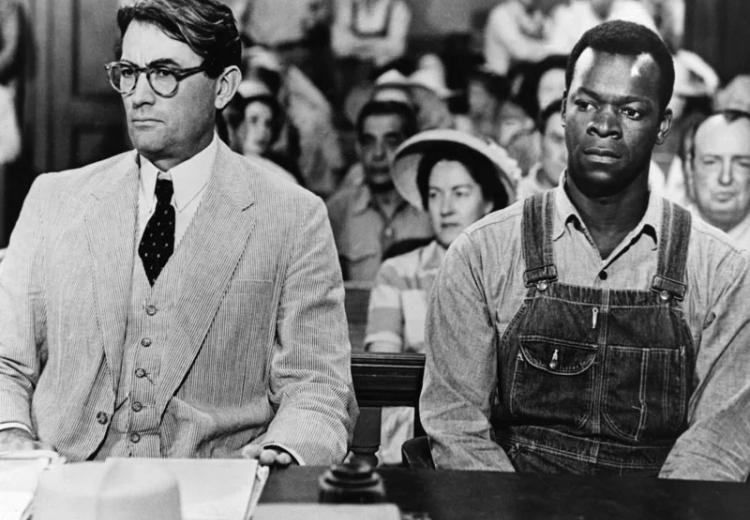Scottsboro Boys and To Kill a Mockingbird: Two Trials for the Classroom

Promotional still from the film To Kill a Mockingbird (1962) with Gregory Peck and Brock Peters.
"We know all men are not created equal in the sense some people would have us believe…But there is one way in this country in which all men are created equal- there is one human institution that makes a pauper the equal of a Rockefeller; the stupid man the equal of an Einstein, and the ignorant man the equal of any college president. That institution, gentlemen, is a court."
—To Kill a Mockingbird (1960)
The lessons of the infamous 1930s Scottsboro Boys case in which two young white women wrongfully accused nine African American youths of rape illustrate through fact what Harper Lee tried to instruct through her fiction. Both historical and fictional trials express the courage required to stand up for the Constitutional principle providing for equal justice to all under the law. In this lesson, students will perform a comparative close reading of select informational texts from the Scottsboro Boys trials alongside sections from To Kill a Mockingbird. Students analyze the two trials and the characters and arguments involved in them to see how fictional “truth” both mirrors and departs from the factual experience that inspired it.
Guiding Questions
How does the trial experience in a fictional narrative, To Kill a Mockingbird, compare to the historical Scottsboro Boys trials that inspired it?
In what ways do the book and trial resonate in the U.S. today?
Learning Objectives
Analyze the historical context of the trial and the book to determine the extent to which race relations had changed during the first half of the 20th century.
Compare trial accounts in literary and informational texts, including trial observations, major characters, and closing arguments in each case.
